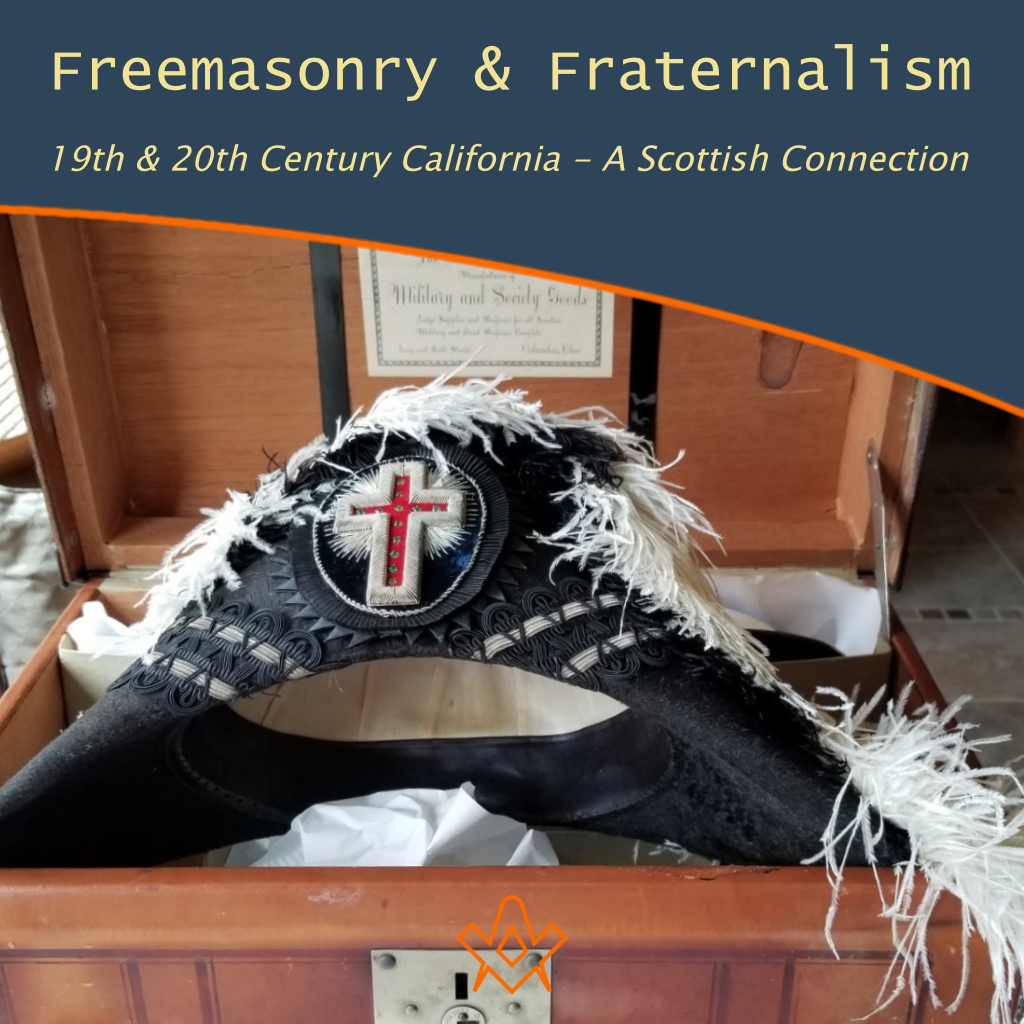What is it that connects a very old, well-known Crieff family, with a former President of the United States of America?
This is not a question that you will find in any quiz books, and of course it is not something that is widely known.
Nevertheless, such a connection does exist and makes for a fascinating story.
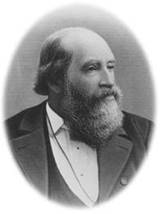
David Jack (1822-1909)
In 1841, a 19-year-old working class youth from Crieff, Perthshire, Scotland, by the name of David Jack, decided to leave his hometown and sail for the brave new world of the United States of America.
For a number of years he worked and resided in New York on the East coast of that great burgeoning country.
He gained work at the US Army establishment of Fort Hamilton as a clerk to a Wheelwright and quickly gained a reputation for being able to handle money.
It was around this time that young Jack made the acquaintance of Robert E. Lee the future American Civil War Confederate Army General, who at that time was a Captain at the Fort.
At this time, he also met a young man by the name of James Clair Flood who was a tradesman working for the same business as Jack, and who will feature later in this story.
In 1848, news began to filter through from California on the West Coast, about a gold strike in the Northern part of that State, and both Jack and Flood decided to make their way there to try their luck.
Jack set off on a perilous journey in an army ship around Cape Horn arriving in San Francisco in 1849, the journey taking 138 days.
Jack abandoned his interest in going to the Gold Mines and found employment gathering taxes at the army Presidio in San Francisco.
A business trip took Jack to Monterey, the former state capital, but since the Gold Rush a sleepy coastal town. He liked what he saw in Monterey and moved there in 1850. [1]
Jack’s talent in handling money was also recognised in Monterey, and by 1852 he was County Treasurer.
Jack along with his East Coast friend James Flood began a money lending enterprise loaning money to the indigent Mexican population and charging interest on the loan.
These loans were often secured on land granted to the Mexicans by the former Mexican Government and Jack often had to foreclose on loans that were not paid off, thus securing title to many acres of land.
The Mexicans were also lax in paying their land taxes and the law at that time stated that after a set period, tax delinquent land could be sold off to others.
As County Treasurer, Jack was ideally placed to follow these sales and make his bid.
By this and other shrewd and sometimes controversial means, Jack secured title to many thousands of acres of land, eventually becoming one of the largest and richest landowners in California and by extension the USA.
Jack and Flood also speculated on the Mining Exchange in San Francisco buying shares in the Silver Mines of the Nevada Comstock Lode.
James Clair Flood went on to become one of the fabled ‘Silver Kings’, and with his other business partners, William O’Brien, John Mackay, and James Fair, his mining company struck a massive deposit of silver ore in the Nevada Comstock, making the four men multi-millionaires, and among the richest men in the world at that time.
Indeed, it was this silver strike that largely financed the development of San Francisco into the metropolitan City it is today. [2]
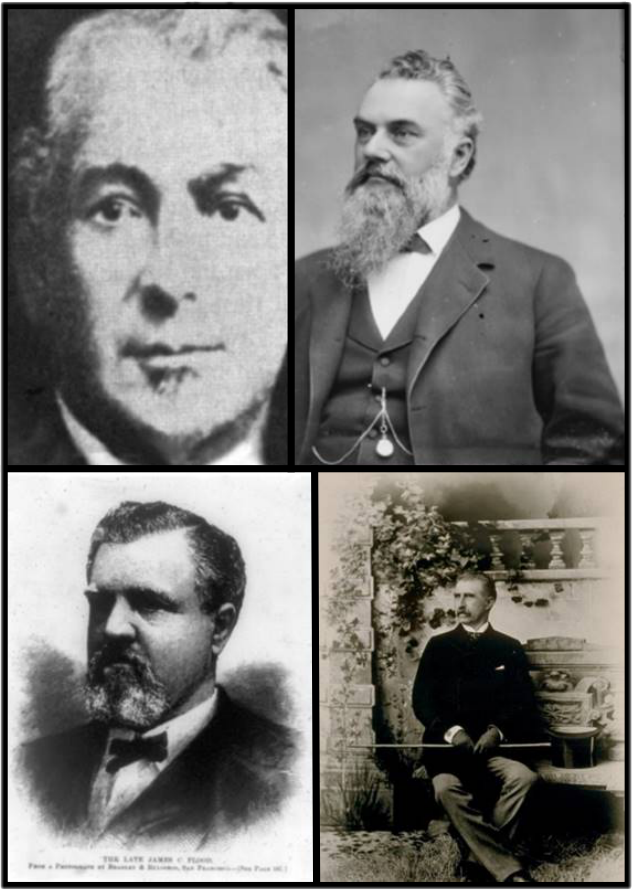
The ’Silver’ or ‘Bonanza Kings’
Clockwise from top left: William Shoney O’Brien, James Graham Fair, John William Mackay, James Clair Flood.
David Jack’s arrival in Monterey in 1850, coincided with a couple of other momentous events in California that year.
In April 1850, the Grand Lodge of Free and Accepted Masons of California was formed. On September 9, 1850, California gained statehood, and became the 31st State of the United States of America. [3]
Ever since the mass migration to the West coast, brought about by the Gold Rush of 1849, miners brought Freemasonry with them, and a number of Masonic Lodges sprang up in the various mining towns throughout California.
Jack’s friend and business associate, the aforementioned ‘Silver King’ James Clair Flood was certainly a Freemason, a member of Golden Gate Lodge No. 30, in San Francisco, but it is not known if David Jack was a Freemason.
A number of his family members were in the Craft though, and I will go on to develop this theme.
Whether a Freemason or not, Jack was a religious man, a Scottish Presbyterian, and proud of it.
He was a Sunday school teacher in Monterey for 50 years, and also took great pride in that fact. He was primarily responsible for the building of the first Presbyterian Church in Monterey, which was known as ‘David Jack’s Church’.
However, his largesse was not confined to that particular Protestant organisation.
Jack also loaned money to the Methodist Church and he donated 100 acres of land on which the Methodists formed a religious retreat which became known as the ‘Pacific Grove Retreat’ in 1875.
The retreat eventually grew into the present city of Pacific Grove. [4]
The importance of Freemasonry to the pioneer families of California is noted by Sociologist John Walton in his book Western Times and Water Wars when he describes Freemasonry in Inyo County, California:
Among men Freemasonry was by far the most influential group with a Protestant provenance.
Chartered in 1872 as the first lodge of any kind in the county, the Ancient and Accepted Order of Freemasons (or F &AM, for Free and Accepted Masons) spread from Independence to Bishop Creek and Big Pine, recruiting many of the local elite in commerce and agriculture.
In December 1873 for example, the Masons of Independence elected their officers for the next two years:
Henry Isaacs, a clerk and merchandise store owner:
Andrew Bell, a prosperous farmer and miller:
Harry Egbert, a lawyer:
Isaac Harris, co-owner of the largest merchandise store:
Charles B. White, a physician and county hospital contractor:
John and James Shephard, large farmers and road contractors:
James Brady, a mine owner:
John B. White, a clerk:
and one anomalous S.B. Upton, a farm labourer…The Masonic Order provided local business men a trusted circle of respectable associates.
As Max Weber observed about the Protestant sects generally, Freemasonry ensured credit worthiness in a risky commercial environment.
The stress on respectability also encouraged a civic spirit in the lodges, expressed in school fund raising and the funeral rites promised to each member.
When Sheriff Passmore was killed in the line of duty, his fellow Masons turned out pallbearers and a cortege of forty carriages.
Yet as a secret society, the Masonic Order acted mainly behind the scenes, promoting solidarity among members of the commercial, political, and social elite.
Their unity would play a key role in the struggles looming ahead in the twentieth century.
In pioneer society, Freemasonry was important as an expression of community and middle-class culture. [5]
It was likewise highlighted by Lynn Dumenil in her 1994 study Freemasonry and American Culture 1880–1930.
About Freemasonry in Oakland, California, she observed that:
It brought together men, primarily native Protestants, who shared belief in American social, political, and religious ideals.
It perfectly reflected that fusion of Protestantism and Democracy which characterised American middle-class culture.
Committed to equality, it tempered rugged individualism with an insistence on brotherly love.
Most importantly, it demanded adherence to the moral virtues that made for respectability, temperance, sobriety, and industry. [6]
The aforementioned Nevada Comstock Lode was another area where Freemasonry played an important role.
From its early days the Comstock had a growing number of unions, social clubs and fraternal organisations.
In his book ‘The Roar and the Silence’, Ronald M. James writes:
Other organisations including the Freemasons, the Knights of Pythias, and the Odd Fellows, were social, philanthropic groups intended to improve the community and to provide a forum where like-minded men could gather.
He also states that:
The Edgington family was typical of the Comstock’s wealthy merchants. Abram, as a Protestant Freemason born in the United States was able to take advantage of opportunities and contacts.
With tenacity and hard work, he established his place of prominence in the community, affording his daughter the chance of an economically advantageous marriage as well as the luxury of divorce and the arts. [7]
Although Freemasonry is a strictly non-sectarian organisation, these authors highlight the fact, that at least in the early pioneer days in California, it was an organisation which drew its membership from a largely, white, Anglo-Saxon, protestant middle-class.
This would of course necessarily change through time, as persons of all colours, creeds and beliefs would enter the organisation.
David Jack prospered in California and eventually married Maria Romie.
They had seven children, five girls, Louisa (known as Lee), Margaret, Mary, Janet, and Vida, and two boys Will and Romie.
While his family were growing up in Monterey they made the acquaintance of a young woman by the name of Lou Henry, the daughter of a local bank treasurer.
Lou had moved from Iowa to California with her family in 1885, eventually settling in Monterey, where her father Charles Henry helped set up a local bank.
She initially attended Los Angeles Normal School in 1891, but transferred to San Jose Normal School in 1892 where she received her teaching degree.
Lou taught in Monterey for a while and at one stage was a private tutor to Vida Jack who was lame as a child.
Lou Henry was closely associated with the Jack family. She was particularly friendly with Romie Jack and the two enjoyed fishing trips and horseback rides together.
The closeness of their association is highlighted in this letter Romie wrote to her when he was at school in San Rafael.
San Rafael March 12, 1895
Dear Lou,
I have just received your letter. I am sorry but my school does not close until June 7, so you would have to wait over two weeks for me; Could you wait that long?
I have ten days at Easter, couldn’t we do something then? Trout season will be open and we could go down to the Little River or some such place.
I expect to spend the first part of my vacation in Monterey, but I want to spend a part of it somewhere else.
I am very anxious to go to Yosemite this summer, but I don’t know whether I can or not.
I would like to go to Monterey in April while the Knights of Pythias are there. It will seem kind of funny to see the town with a little bit of life in it.
I will address this letter to the University as I suppose you still go there for your mail even if you do live in the City of Palo Alto.
I have been riding my bicycle a good deal lately, a week ago last Saturday I rode from here to Petaluma and back. It is about twenty-five miles to Petaluma, so I made over fifty miles going and coming.
I am writing this at night and I can only see about every other word and I can’t tell till I get to the end of the page whether the lines are straight or not, and if you can’t read it send it back and I will translate it for you.
Your friend
Romie C. Jack. [8]
Lou Henry was also a close acquaintance of Romie’s sister Margaret and the two of them are credited with forming the Monterey Chapter of the American Red Cross in 1898.
Lou attended a lecture by a famous geologist from Stanford University, which impressed her greatly, and afterwards she approached Professor J.C. Banner and explained her love of the outdoors and her wish to study geology, a subject not pursued by women at Stanford at the time.
She subsequently enrolled in the Department of Geology at Stanford University and went on to become the first woman to major in that subject at Stanford.
While there, Lou met a senior assistant of Dr Banner, named Herbert C. Hoover.
Hoover was a pioneer student at Stanford, being a member of its first graduating class.
Lou and Herbert found they had much in common. They had been born within 100 miles of each other in Iowa, were both Geology majors, and like Lou, Herbert had a love of fishing.
The two got to know each other well during various field trips and romance blossomed.
Lou completed her degree in 1898. Whilst she studied, Herbert gained employment with the British mining company in Australia and was sent out there to work.
After her graduation from Stanford, Lou returned to the family home in Monterey where she received a cabled proposal of marriage from Herbert.
She accepted and Herbert travelled back to Monterey from Australia, via London, to marry her on February 10, 1899.
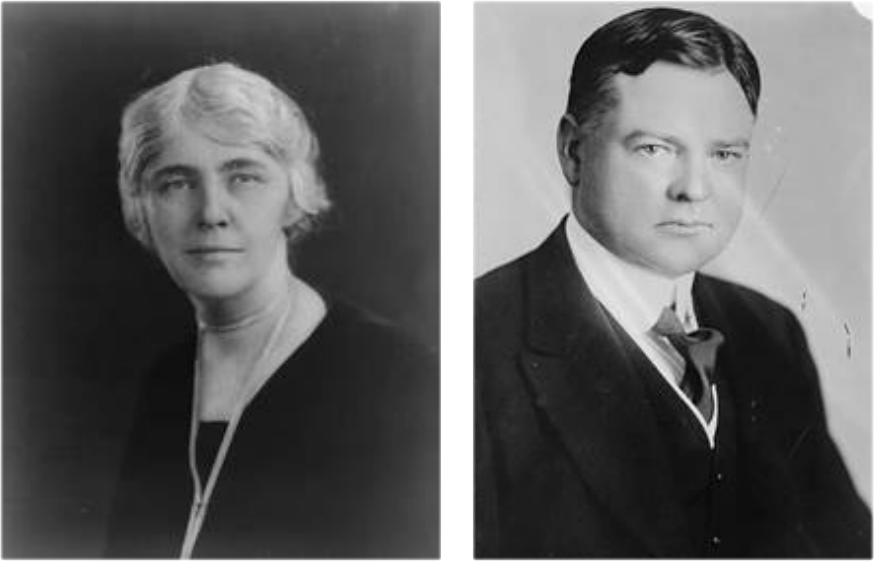
Left: Lou Henry Hoover, Underwood & Underwood, 1928.
Right: Herbert Hoover, 1917
IMAGE LINKED: Library of Congress Attribution 4.0 International (CC BY 4.0)
They embarked almost immediately on a trip to China where Lou put her geology degree to good use assisting her new husband by mapping the parts of China he would visit, researching mining laws, assisting with reports and visiting mines.
Herbert Hoover entered politics and in 1921, the couple, who now had two sons, Herbert Jnr. and Allen Henry, moved to Washington D.C., where Herbert became Secretary of Commerce.
In March 1929, he succeeded Calvin Coolidge and became 31st President of the United States of America, Lou becoming First Lady of the country.
However, only seven months after his inauguration, the stock market crashed and the depression years followed.
Rightly or wrongly, Hoover was largely blamed for this crisis, and he served only one term in office before being succeeded by Franklin Delano Roosevelt.
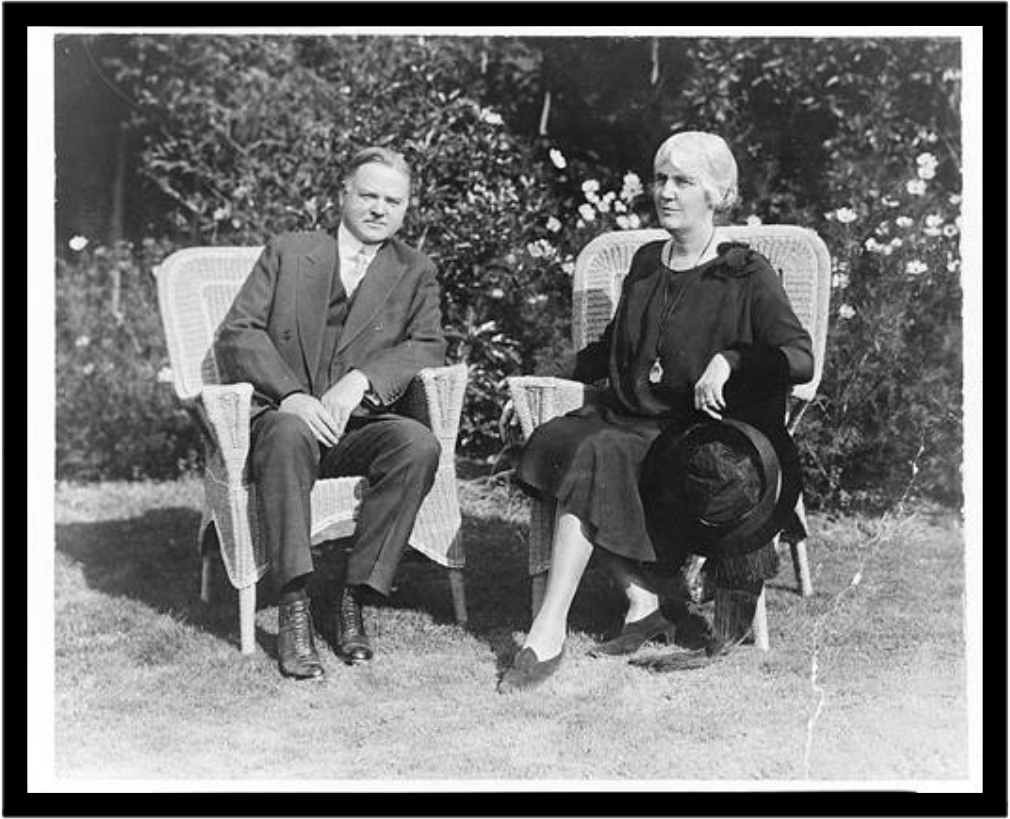
Herbert Hoover and Mrs. Hoover, full-length portrait, seated on wicker chairs, facing front. , 1929.
IMAGE LINKED: Library of Congress Attribution 4.0 International (CC BY 4.0)
Following his presidency, Hoover became associated with another great American Institution, The California Institute of Technology (Cal Tech) and served on the Board of Trustees of that institution.
Also serving on the Board at the same time was one Allan C. Balch who just happened to be the husband of family friend Janet Jack.
Balch was President of the Board of Trustees from 1933 to 1943, and he and his wife Janet donated millions of dollars to the institution.
Other luminaries such as Albert Einstein, and Edwin Hubble (Hubble Telescope) sat on the board along with Hoover and Balch.
Allan Christopher Balch had worked in the Jack family business for a time before borrowing money from David Jack and branching out on his own.
He was an engineering graduate and along with business associates William G. Kerckhoff and Henry E. Huntington, became a major player in Southern California business history, and a pioneer in Hydro Electric Power as well as other public utilities, particularly around Los Angeles. [9]
Given the importance that Freemasonry played amongst the pioneer families of California, it is no surprise that members of the Jack family were drawn to the Craft.
The two most prominent members of the organisation were David Jack’s son Will Jack, and his son-in-law, the aforementioned Allan C. Balch.
In 1907, David Jack handed over the running of the family business to his family and soon after this the David Jack Corporation was formed.
Will Jack served as the corporation’s first President.
Will Jack’s life and career is adequately summed up in the following obituary published at the time of his death on 29 January, 1937.
Will Jack, native son of Monterey and member of one of the pioneer families of the community, passed away here this morning after prolonged illness.
He was the son of the late David Jack and Maria Romie Jack, both of whom were members of old Monterey County families.
Mr Jack had recently observed his 70th birthday. He was born here on 4 January 1867.
He received his early education at the University of the Pacific at San Jose, California later going to Cornell University and subsequently to the Harvard Law School where he graduated with the degree of LL.B in 1894.
Mr Jack was admitted to the practice of law in the States of Massachusetts and New York, being affiliated with the legal department of the German Legal Aid Society.
Later he returned to Monterey where he organised the David Jack Corporation and became its President and General Manager. He served successfully in this capacity for many years.
Mr Jack also took an active interest in municipal affairs and was Mayor of Monterey during the years 1905 to 1910, during which time the city had a very successful administration.
He was a member of the Monterey Masonic Lodge and of the Knights Templar of Watsonville. He served as Master of the Monterey Masonic Lodge for a period.
He was also a member of the Monterey Elks Lodge.
Will Jack was loved by a large group of friends who admired him for his integrity, honesty, and kindly interest in his fellow citizens.Among his acquaintances and business associates his word was always as good as his bond.
Mr Jack is survived by his sisters Janet (Jack) Balch, Lee L. Jack, Mary (Jack) Thomas, Margaret A. Jack, and Vida G. Jack and by his brother Romie C. Jack.
Funeral services will be conducted by the Monterey Masonic Lodge at 2PM. Monday afternoon from the Monterey Presbyterian Church. Rev. T.J. Barkle will assist with the services.
The Paul Mortuary is in charge of arrangements. [10]
Freemasonry appears to have played a large part in the life of Will Jack. He was a member of the Monterey Lodge No. 217 and for a time served as Right Worshipful Master.
It was during his tenure as President of the David Jack Corporation that the Monterey Lodge purchased a lot from the Corporation on which they built their new lodge, which was completed in 1915. [11]
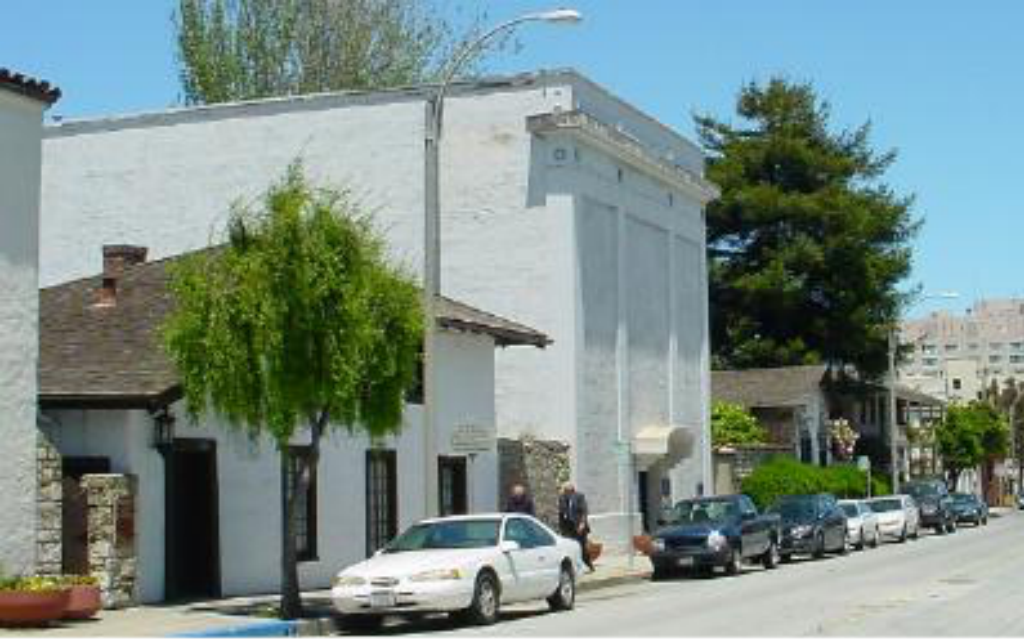
Monterey Lodge 217 – As his obituary stated, he was a member of Watsonville Commandery No. 22, Knights Templar.
IMAGE credit: Author
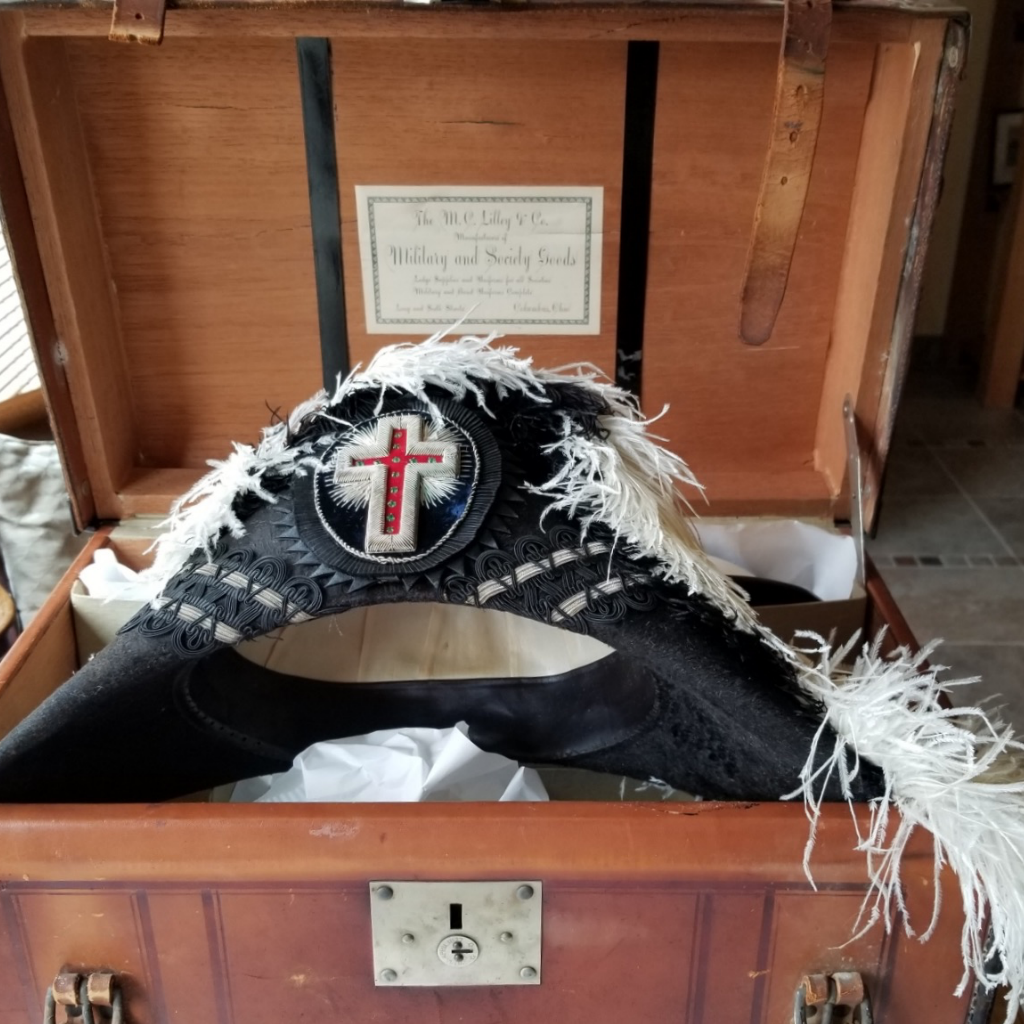
The Masonic Knights Templar regalia box once belonging to Will Jack of Monterey.
IMAGE credit: Author
He was also a Noble of the Ancient Arabic Order of Nobles of the Mystic Shrine, better known simply as the Shrine, a Masonic body devoted to charitable deeds.
The Shrine is most notable for its ‘Shriner Hospitals’ which are situated throughout North America.
Jack was a member of Islam Shrine (now Asiya Shrine) based in San Francisco.
On his death, Will bequeathed money and a Homestead to the Shrine which they later sold. [12]
He was also involved with the Order of the Eastern Star and was member of Monterey Chapter No. 68 in Pacific Grove, California.
His sister Mary was also member of this Chapter, serving as ‘ADAH’ in 1896. Another sister Margaret was initiated into Monterey Chapter No. 239 in 1906.
Chapters No. 68 and No. 239 Consolidated and became part of Reveille Chapter No. 47 in Salinas, California, which still exists. [13]
Will Jack’s involvement is highlighted in this newspaper extract from the Salinas Weekly Index newspaper of 7 May 1896:
Personal and Social
Will Jack came over from Monterey to attend the Eastern Star meeting in
Salinas Monday night. [14]
A report of that evening’s meeting shows that a number of distinguished persons and Freemasons turned out for the event.
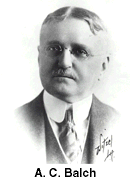
Allan C. Balch was also a prominent Freemason in California.
He was raised a Master Mason in Pentalpha Lodge No. 202 (now known as Wisdom Lodge No. 202) on June 16, 1903.
He was a member of Los Angeles Commandery No. 9, Knights Templar, and like his brother-in-law Will Jack, was a ‘Shriner’, a member of Al Malaikah Shrine in Los Angeles which he joined on July 15, 1904.
He also attained the 32nd degree within the Ancient and Accepted Scottish Rite of Freemasonry in California.
As a very rich businessman, Balch was noted for his various Philanthropic deeds, one of the most public, his donation of the famous shell for the Hollywood Bowl during his tenure as President of the Hollywood Bowl Association.
As such he was ideally placed to assist the Shrine in works of benevolence. He was also President of the Good Hope Hospital Association in Los Angeles. [15]
The Al Malaikah Shrine in Los Angeles is famous for its Shrine Auditorium which has hosted the Hollywood Oscars ceremony on many occasions.
Perhaps because of its Hollywood connection, a number of famous actors have been members of this particular Shrine over the years, including Clark Gable, Roy Rogers, Gene Autry, John Wayne, Audie Murphy and Ernest Borgnine. [16]
Although it is said that 15 American Presidents, including George Washington, were Freemasons, there is no evidence that Balch’s friend Herbert Hoover was in the Craft.
However, both Hoover and Balch were members of other organisations. They were both members of the elite Pacific Union Club which coincidentally or otherwise, was based in the former home of the ‘Silver King’ and Freemason James Clair Flood, in the Nob Hill District of San Francisco.
Balch and President Herbert Hoover were also members of the men-only, San Francisco Bohemian Club, which holds open-air meetings each year at what is called Bohemian Grove, in Sonoma County, California, to which a very elite gathering of politicians and businessmen from around the globe attend every July.
Many see this as a quasi-Masonic organisation, and the club certainly do carry on elaborate rituals with members clothed in various regalia during their outdoor meetings.
However, their rituals appear to be more pagan or druidic, rather than religious.
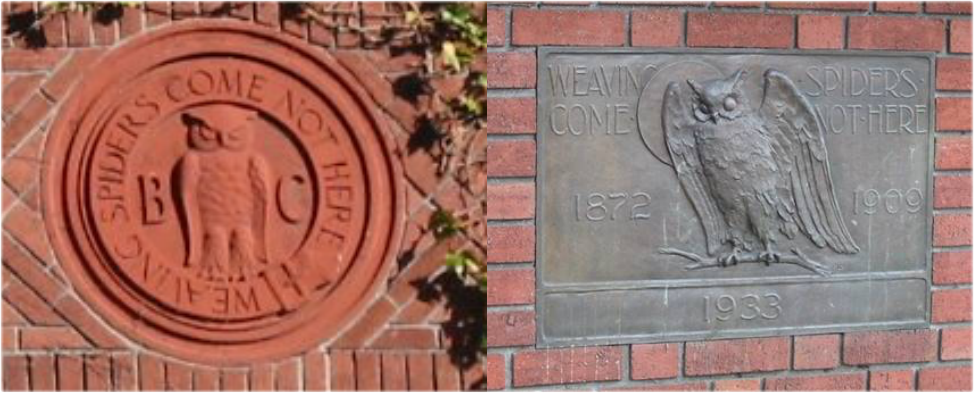
Left: The club’s mascot owl cast in masonry perched over the main entrance at 624 Taylor Street. The owl is flanked by the letters B and C and surrounded by words of the club’s motto.
Right: Metal bas relief owl and inscription on the building of the Bohemian Club
IMAGE LINKED: wikimedia Attribution 4.0 International (CC BY 4.0)
The club was formed mainly by artists and writers in 1872, and it has been said that every Republican American President since Herbert Hoover has been a member, with perhaps surprisingly, the only exception being the present incumbent George W. Bush.
The Bohemian Grove is split up into various ‘camps’ and each camp is inhabited by businessmen, politicians and other individuals with common interests.
For example, Allan Balch was a member of the ‘Lost Angels’ Camp which reflected the fact he lived and worked in Los Angeles. This camp generally contains many of the ‘movers and shakers’ from Los Angeles.
Herbert Hoover was a member of the ‘Cave Man’ camp and he hosted many top politicians at the Grove.
Nowadays, Bohemian Grove is the subject of much fevered speculation by so-called conspiracy theorists who believe that matters as serious as war and peace are discussed at these meetings.
Some believe that the ‘Manhattan Project’, America’s development of the Atomic Bomb was first conceived within the Redwood trees of the Grove summer encampments.
It is no secret, indeed a well-documented fact, that on 14 and 15 September, 1942, Ernest Orlando Lawrence, the Nobel prize winning physicist, and one of the scientists involved in the ‘Manhattan Project’ along with J. Robert Oppenheimer and Edward Teller, held planning meetings for the project within a clubhouse at Bohemian Grove.
Lawrence had been a member of the club since 1932. However, some seek to distance the Bohemian Club from any official involvement in the project, by highlighting that the meeting was held at the Grove off-season and that no other ‘Grovers’ were present at the time.
There does seem little doubt that like Freemasonry itself, the Bohemian Club can be the subject of paranoid rantings by misinformed individuals or groups. [17]
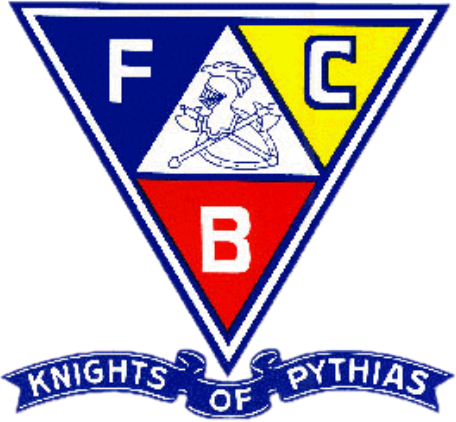
There have been a number of references in this essay to the ‘Knights of Pythias’.
For the avoidance of any doubt, this is not a Masonic Order. The Knights of Pythias is a fraternal organisation which was founded in Washington DC on 19 February, 1864.
It was the first fraternal organisation to receive a charter under an act of the United States Congress in 1870.
It was founded by Justus H. Rathbone, a Royal Arch Freemason who had been inspired by a play written by Irish Poet John Banim, which dealt with the legend of Damon and Pythias.
The legend illustrated the ideas of loyalty, honour and friendship, which are central to the Pythian Order.
Given that this order was formed by an active Freemason, it is no surprise that like many other non-Masonic orders created by Freemasons, the order is very similar to Freemasonry in the way it is structured.
The Order has over two thousand lodges in the United States and Canada, with a total membership of 50,000 as of 2003.
The order was initially restricted to white males although this requirement was dropped in the 1950s. As with Freemasonry, a belief in a Supreme Being is a requirement for membership, and the order is non-sectarian.
It is also similar to Freemasonry in that it has its ladies and children’s groups and many Freemasons are also members of the order.
By the first decade of the 20th century, the ‘Knights of Pythias’ were the third largest fraternal society in America, after the Freemasons and Odd Fellows. [18]
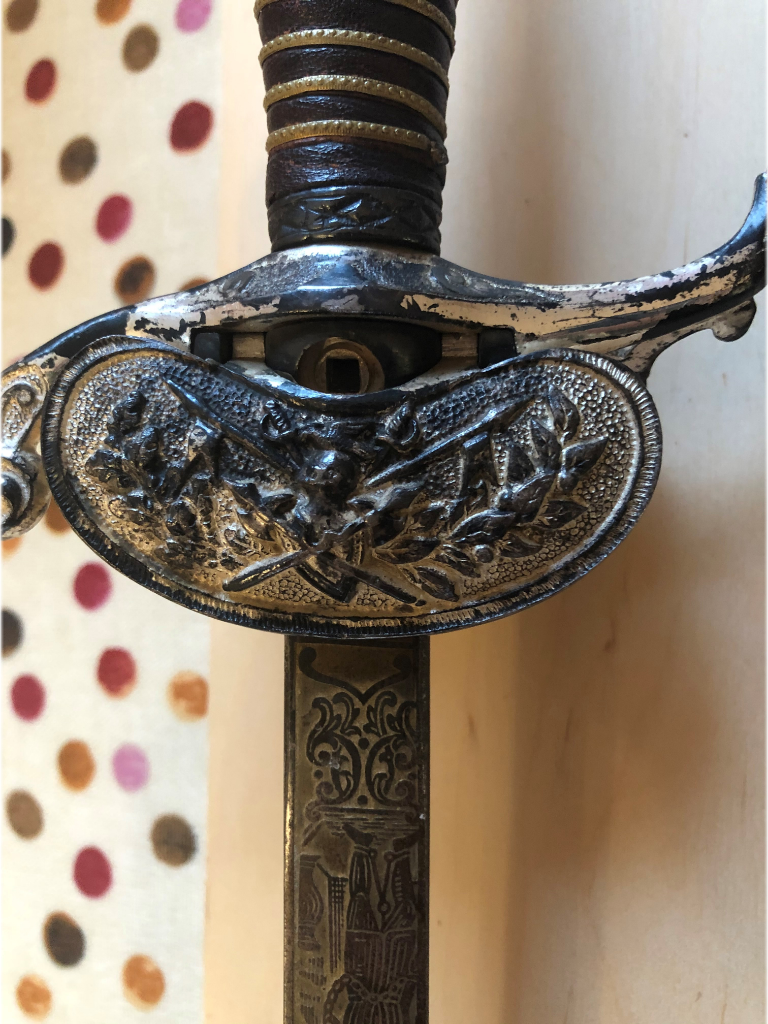
The ceremonial Knights of Pythias sword once belonging to Will Jack of Monterey.
IMAGE credit: Author
A couple of other orders have received a mention in this essay, namely ‘The Elks’, and ‘The Odd Fellows’ and I would like to take some time to discuss the history and purpose of these organisations.
As indicated earlier, Will Jack was a member of the Monterey Elks Lodge No. 1285.
The full title of this organisation is the Benevolent and Protective Order of Elks and their history is an interesting one, and again has more than a passing resemblance to Freemasonry.
On Friday 15 November 1867, Charles A. Vivian, an English comic singer landed in New York on an English trading ship from Southampton, England.
On his arrival he entered a Free and Easy known as the Star Hotel owned by a John Ireland situated near to Broadway. The piano player at this establishment was one Richard R. Steirly and Vivian struck up an acquaintance with him and offered to sing a few songs to his piano accompaniment.
Vivian made such an impression that Ireland alerted his friend Robert Butler, Manager of the American Theatre, and Vivian ended up with a three week singing engagement at the theatre.
On 23 November 1867, Steirly went to the American Theatre to arrange orchestration of some of Vivian’s songs.
After a matinee performance, Vivian took Steirly over to a man named Sandy Spencer’s bar, where they met up with Hughley Dougherty, Cool Burgess, and Henry Vandemark.
Vandemark suggested that the group roll a dice to see who would purchase the refreshments. Vivian responded by stating that he never used dice, and then proceeded to show them a new party trick.
He asked for three corks and gave one each to Stierly, Vandemark and kept one for himself. Vivian then explained that each man had to drop the cork on the bar and pick it up as quickly as possible. The last man to pick up his cork had to buy the round of drinks.
About this time the Excise Law was being strictly enforced and Sunday was a very dry day in New York. The aforementioned gentlemen developed the habit of meeting at Steirly’s boarding house where they partook of a regular stock of beer.
This little group of drinkers styled themselves the ‘Corks’ with Vivian the ‘Imperial Cork’.
Through time the revelries of the group disturbed other tenants and other quarters had to be found. They found premises at 17 Delancy Street, New York, over a Saloon kept by a Paul Summers where they continued their meetings.
At this time the ‘Corks’ were purely a convivial group of friends composed mainly of professional and semi-professional entertainers and some actors.
Among this group were Thomas Riggs, George McDonald, William Sheppard and George Thompson.
It was following McDonald’s introduction to the cork trick that he referred to the group as the ‘Jolly Corks’ and this name stuck for a while.
McDonald went on to suggest that the group should become a protective and benevolent society and at a meeting held on 2 February 1868, he put forward a motion to that effect, to organise the ‘Jolly Corks’ into a lodge along benevolent and fraternal lines.
Vivian had the idea of naming the organisation after an English organisation called the Royal Antediluvian Order of Buffaloes, which he was a member of, but the rest wanted to adopt a distinctly American name.
At a visit to a library, members of the committee found a work of Natural History which described the Elk as an animal fleet of foot, timorous of doing wrong, but ever ready to combat in defence of itself or of the female of the species.
These admirable qualities appealed to the committee as being such that their members might aspire to and they adopted this name for their organisation.
On February 16, 1868, the committee reported, recommending that the ‘Jolly Corks’ become the ‘Benevolent and Protective Order of Elks’ and the recommendation was carried. [19]
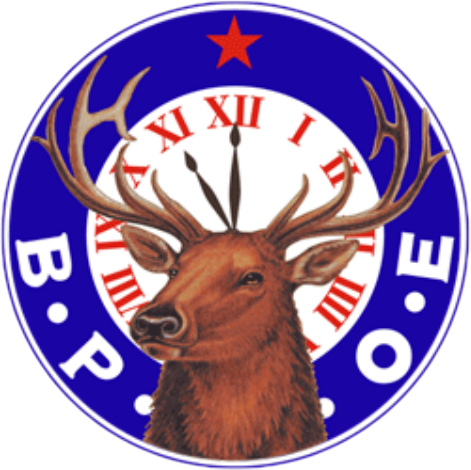
The Logo of Benevolent and Protective Order of Elks
The Monterey Elks Lodge to which Will Jack was member was organised on July1, 1912 and had their first meeting on July 24 that year.
The purpose of the Elks is best summed up in their mission statement which is;
To inculcate the principles of Charity, Justice, Brotherly Love and Fidelity; to recognize a belief in God; to promote the welfare and enhance the happiness of its Members; to quicken the spirit of American patriotism; to cultivate good fellowship; to perpetuate itself as a fraternal organization, and to provide for its government, the Benevolent and Protective Order of Elks of the United States of America will serve the people and communities through benevolent programs, demonstrating that Elks Care and Elks Share. [20]
The similarities to Freemasonry can be clearly seen from this statement.
The society is organised into Lodges in the Masonic fashion and operates a degree system. However, the practice of wearing a lambskin apron, and other practices akin to Freemasonry have been discontinued over the years.
One other interesting fact about the Monterey Lodge is that film star Clint Eastwood is a member.
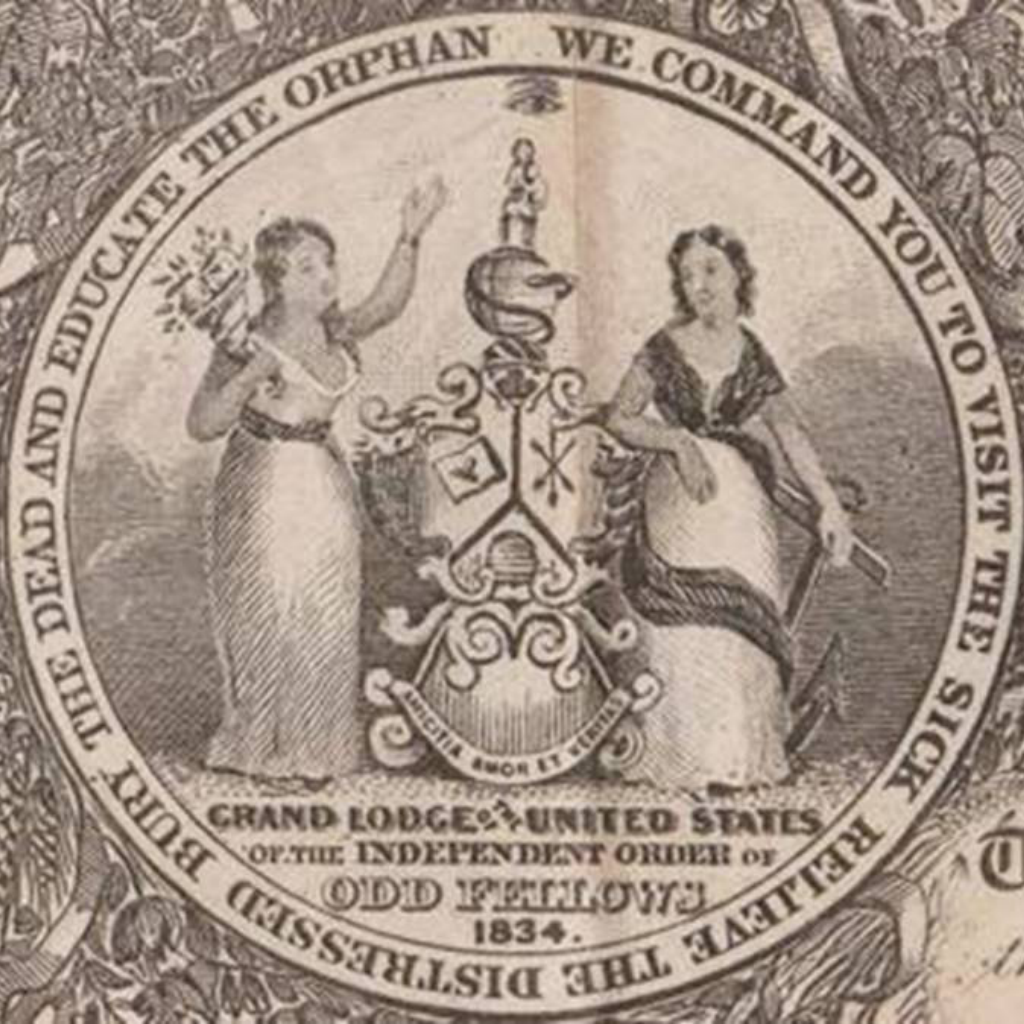
Seal of the Sovereign Grand Lodge of the Independent Order of Odd Fellows, from certificate (1871)./h5>
IMAGE LINKED: wikimedia Attribution 4.0 International (CC BY 4.0)
The ‘Odd Fellows’ or the ‘Independent Order of Odd Fellows (I.O.O.F.) is another order with a Masonic flavour.
There are a number of theories as to the origin of the name ‘Odd Fellows’. Some suggest that because the purpose of the Odd Fellows was ‘fraternity and social unity and fellowship for mutual help’, a concept alien to 18th century England, where the organisation was originally formed, there was certain appropriateness to the title.
The other suggestion is that it was formed by men engaged in various or odd trades, as there were already organisations for the larger trades, such as operative stonemasons.
The earliest recorded meeting of an Odd Fellows Lodge was in England in 1748. The first record of such a meeting in America was in New York in 1806, when Shakespeare Lodge No. 1 was formed. [21]
Odd Fellowship was established in California in 1849, a year before the Masonic Grand Lodge of Freemasons was formed.
The first Odd Fellows Lodge was San Francisco No. 1. Like Freemasonry, Odd Fellowship spread throughout the state, particularly in the Gold Rush towns such as Marysville, Rough and Ready, Grass Valley, Whisky Flat, Hangtown (Placerville) Comptonville, San Juan, Downieville.
The Odd Fellows Grand Lodge of California was established in 1853, three years after the Masonic Grand Lodge. Early in the history of California, these two largest fraternal orders, the Odd Fellows and the Freemasons embarked on a unique cooperative project to benefit the State.
The two fraternal organisations created the first hospital in the new State of California in 1850. This followed from the great flood of the winter of 1849-1850 and it was called the ‘Odd Fellows and Masons Hospital’.
The hospital catered for all patients regardless of their affiliations, or whether they were members of these organisations or not. The hospital was financed exclusively by members of both these Orders.
The similarities to Freemasonry are also evident in this organisation.
The principle tenets of the Odd Fellows are: Friendship, Love, and Truth, and their principle Odd Fellows emblem is the three links, which stand for the virtues of these tenets.
The duties required of an Odd Fellow, are to visit the sick, relieve the distressed, bury the dead, and educate the orphan.
The Odd Fellows organise themselves into lodges on the Masonic model and have a degree system.
In the early days the Odd Fellows met in Taverns where they were often criticised for drinking to excess. Their early meetings in many ways resembled that of the aforementioned ‘Elks’.
Slightly more complex rituals were adopted in the 1820s, including degrees such as the ‘White degree’, ‘Blue degree’ and ‘Scarlet degree’.
The Covenant and Remembrance Degrees were added in 1826. On one occasion an I.O.O.F member petitioned for membership of the Freemasons, but was rejected because he belonged to that ‘Bacchanalian Club of Odd Fellows’.
Experiences such as this led to a move towards temperance, and saloon keepers were barred from membership of the Odd Fellows.
This also led to more emphasis being placed on ritual and new ritual was adopted.
The ritual became more dramatic and an exploration of the ties between father and son in which the initiate ‘dramatically gains the approval of the patriarchs and acquires manhood and acceptance into the masculine family of the lodge’.
The expanded ritual of 1845, consisted of six degrees in the subordinate lodge and three degrees in what was known as the Encampment.
The latter name will be familiar to Masonic Knights Templar. The subordinate lodge degrees were Initiatory, First or White Degree or Degree of Friendship, Second or Covenant Degree or Degree of Brotherly Love, Third or Royal Blue Degree or Degree of Truth, Fourth or Degree of Remembrance, Fifth, or Scarlet Degree or Priestly Order.
The emblems originally pertaining to these degrees were as follows:
Initiatory – All Seeing Eye, Heart and Hand, Coffin, Skull and Cross Bones, Beehive, The Links and Axe;
First – The Lamb, The Bundle of Sticks;
Second – Quiver and Arrows;
Third – Moses Rod, the Dove, The Brazen Serpent, the Ark and the Covenant;
Fourth – The Scales and Sword, the Horn of Plenty.
Fifth – The Bible, Sun Moon and Stars, Budding Rod.
The encampment degrees consisted of the Patriarchal, Golden Rule, and Royal Purple.
The rituals were revised in 1835, 1845, and 1880.
The Patriarchal introduced the emblems of the Alter of Incense, the Patriarchs Tent, the Golden Rule, the Three Pillars and the Globe, the Royal Purple, the Hour Glass and Scythe.
Under the 1845 ritual, members of the Initiatory degrees wore white aprons. Members of succeeding degrees wore collars and no aprons. Members of the Encampment wore black aprons and gauntlets.
Again, the similarities to Freemasonry are evident.
The order also has a semi-military, uniformed degree known as the Patriarchs Militant, which is open to those who have received the Royal Purple degree of an Encampment.
This sounds rather similar to the progression from Royal Arch Mason to Knight Templar in the Masonic Orders, and the Odd Fellows do confer an honorary degree of ‘Grand Decoration of Chivalry’.
The Californian Odd Fellows hold an annual Cave Degree at the Pythian Cave (Knights of Pythias) near Yreka, California.
In 1940, Yreka Lodge No. 19, first held a second degree in the Pythian Cave and have done so annually thereafter with only a few exceptions during wartime or when improvements required to be made to access the site.
The Cave Site is also used by the Masonic Order for degree work every other year, and the Masons have contributed financially to improvements at the Cave Site.
This mutual use of and financing of the Cave Site only serves to show the close connection between some of the fraternal orders in California and the undoubted fact that many men are members of several of these organisations. [22]
In this essay I have shown how Freemasonry played a very important role in the social and cultural development of California.
Freemasonry, as well as other fraternal orders heavily influenced by Freemasonry or developed by active Freemasons provided the social cohesion and mutual support networks, which were essential to the well-being and economic prosperity of fledgling communities in California.
They also helped those communities transplant their well-developed cultures into what was an alien landscape.
I have taken the liberty of introducing a few of my ancestors into the essay. As some of the original pioneers of California, and prominent Freemasons themselves, they are not out of place or context.
Footnotes
Acknowledgements
The letter from Lou Henry Hoover to Romie C. Jack is reproduced with the kind permission of;
Matthew T. Schaefer, Archivist
Herbert Hoover Presidential Library and Museum,
210 Parkside Drive
West Branch, IA 52358
tel: 319-643-5301
NB: A version of this article initially appeared in ‘Masonic Magazine’ issue six.
The Kenneth Jack Library – articles about David Jack
https://www.mayohayeslibrary.org/the-kennth-jack-library.html
References
[1] Kenneth C. Jack; ‘Monterey County Land King’ – The Story of David Jack’, The Dogtown Territorial Quarterly, No. 48, Winter (2001)
[2] Kenneth C. Jack; ‘David Jack and the Robber Barons’- High Profile Business Relationships of the 19th Century’, The California Territorial Quarterly, No. 55 Fall (2003)
[3] The Grand Lodge of F&A M of California.
[4] The California Territorial Quarterly, No. 55, Fall (2003); Golden Gate Lodge F&AM, No. 30, San Francisco, Roll of Members, (1882).
[5] John Walton, ‘Western Times and Water Wars’, University of California Press 1992 pp 95-96.
[6] Lynn Dumenil, ‘Freemasonry and American Culture 1880-1930’, Princeton University Press, 1984, p109.
[7] Ronald M. James, The Roar and the Silence’, University of Nevada Press, 1998, pp 205, 227.
[8] Kenneth C Jack, ‘Friends in High Places’, The Electric Scotland web site.
[9] Ibid.
[10] The Dogtown Territorial Quarterly, No. 48 Winter (2001)
[11] Monterey Lodge No. 217 web site.
[12] Grace R. Larsen, ‘The Amazing Success Story of the Jack Family, Mills College Quarterly, August, 1987.
[13] Records of The Order of the Eastern Star, Grand Chapter of California
[14] Salinas Weekly Index, May 7, 1896
[15] Records of Grand Lodge of California, San Francisco; Al Malaikah Shrine, Los Angeles, ; Ancient and Accepted Scottish Rite, Southern Jurisdiction, Washington DC,; ‘Los Angeles Times’, May 1 & 2, 1943.
[16] Records of Al Malaikah Shrine, Los Angeles, California, USA.
[17] Gray Brechin, ‘Imperial San Francisco-Urban Power, Earthly Ruin’, University of California Press, 1999, pp 94-95, pp312-318; Peter Martin Phillipps, ‘A Relative Advantage: Sociology of the San Francisco Bohemian Club’, University of California, Davis, Doctoral Dissertation (1994).
[18] Knights of Pythias web site.
[19] The Benevolent and Protective Order of Elks web site.
[20] Ibid.
[21] The Sovereign Grand Lodge, Independent Order of Odd Fellows web site.
[22] Stanley J. Bransgrove, ‘Toward A Fraternal History Of Marin County: A Survey of Secret Societies Being A General History Of Various Fraternities And Their Specific Impact In Marin’, -As reproduced in Mill Valley Lodge No. 356, Mill Valley, Marin County, California, website.
Article by: Kenneth C. Jack
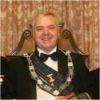
Kenneth C. Jack FPS is an enthusiastic Masonic researcher/writer from Highland Perthshire in Scotland.
He is Past Master of a Craft Lodge, Past First Principal of a Royal Arch Chapter, Past Most-Wise Sovereign of a Sovereign Chapter of Princes Rose Croix.
He has been extensively published in various Masonic periodicals throughout the world including: The Ashlar, The Square, The Scottish Rite Journal, Masonic Magazine, Philalethes Journal, and the annual transactions of various Masonic bodies.
Kenneth is a Fellow of the Philalethes Society, a highly prestigious Masonic research body based in the USA.
Recent Articles: Kenneth C. Jack
 Observations on the History of Masonic Research Archaeology is often associated with uncovering ancient tombs and fossilized remains, but it goes beyond that. In a Masonic context, archaeology can be used to study and analyze the material culture of Freemasonry, providing insight into its history and development. This article will explore the emergence and evolution of Masonic research, shedding light on the challenges faced by this ancient society in the modern world. |
 Anthony O'Neal Haye – Freemason, Poet, Author and Magus Discover the untold story of Anthony O’Neal Haye, a revered Scottish Freemason and Poet Laureate of Lodge Canongate Kilwinning No. 2 in Edinburgh. Beyond his Masonic achievements, Haye was a prolific author, delving deep into the history of the Knights Templar and leaving an indelible mark on Scottish Freemasonry. Dive into the life of a man who, despite his humble beginnings, rose to prominence in both Masonic and literary circles, leaving a legacy that continues to inspire. |
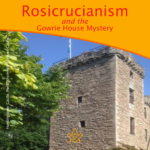 Rosicrucianism and the Gowrie House Mystery Unearth the mystifying intersections of Rosicrucianism and the infamous Gowrie House Mystery. Dive into speculative claims of sacred knowledge, royal theft, and a Masonic conspiracy, harking back to a fateful day in 1600. As we delve into this enthralling enigma, we challenge everything you thought you knew about this historical thriller. A paper by Kenneth Jack |
 Thomas Telford's Masonic Bridge of Dunkeld Of course, there is no such thing as a ‘Masonic Bridge’; but if any bridge is deserving of such an epithet, then the Bridge of Dunkeld is surely it. Designed by Scotsman Thomas Telford, one of the most famous Freemasons in history. |
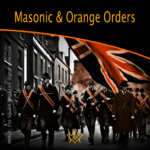 The masonic and orange orders: fraternal twins or public misperception? “Who’s the Mason in the black?” |
 Kenneth Jack's research reveals James Murray, 2nd Duke of Atholl – the 'lost Grand Master' |
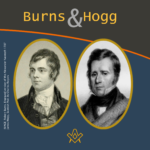 An Oration delivered to the Annual Burns and Hogg Festival, at Lodge Canongate Kilwinning, No. 2, Edinburgh, on 24 January 2018. By Bro. Kenneth C. Jack, FSAScot FPS, Past Master, Lodge St. Andrew, No. 814, Pitlochry. |
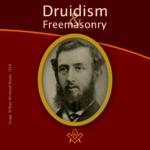 William Winwood Reade was a Scottish philosopher, historian, anthropologist, and explorer born in Crieff, Perthshire, Scotland. The following article by Kenneth Jack, provides some hints that William may have been a Freemason, but there is presently no definitive evidence he was. |
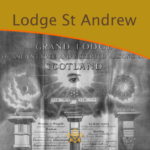 What's in a name? A brief history of the first Scottish Lodge in Australia - By Brother Kenneth C. Jack, Past Master, Lodge St. Andrew, No. 814, Pitlochry |
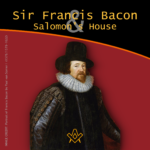 Sir Francis Bacon and Salomon’s House Does Sir Francis Bacon's book "The New Atlantis" indicate that he was a Rosicrucian, and most likely a Freemason too? Article by Kenneth Jack |
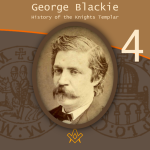 George Blackie – The History of the Knights Templar P.4 The final part in the serialisation of George Blackie's 'History of the Knights Templar and the Sublime Teachings of the Order' transcribed by Kenneth Jack. |
 George Blackie – The History of the Knights Templar P.3 Third part in the serialisation of George Blackie's 'History of the Knights Templar and the Sublime Teachings of the Order' transcribed by Kenneth Jack. |
 George Blackie – The History of the Knights Templar P.2 Second part in the serialisation of George Blackie's 'History of the Knights Templar and the Sublime Teachings of the Order' transcribed by Kenneth Jack. |
 George Blackie – The History of the Knights Templar P.1 First part in the serialisation of George Blackie's History of the Knights Templar and the Sublime Teachings of the Order – by Kenneth Jack |
 Little known as a Freemason, Bro Dr Robert ‘The Bulldog’ Irvine remains a Scottish rugby legend, and his feat of appearing in 10 consecutive international matches against England has only been surpassed once in 140 years by Sandy Carmichael. |
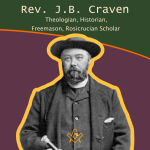 Rev. J.B. Craven: Theologian, Historian, Freemason, And Rosicrucian Scholar Archdeacon James Brown Craven is one of those unsung heroes of Scottish Freemasonry about whom very little has been previously written – here Kenneth Jack explores the life and works of this remarkable esoteric Christian. |
 Discover the powerful family of William Schaw, known as the 'Father of Freemasonry' |
 This month, Kenneth Jack invites us to look at the life of Sir William Peck; - astronomer, Freemason and inventor of the world's first electric car. A truly fascinating life story. |
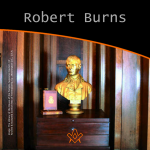 A Tribute to Scotland's Bard – The William Robertson Smith Collection With Burns' Night approaching, we pay tribute to Scotland's most famous Bard – The William Robertson Smith Collection |
 The Joy of Masonic Book Collecting Book purchasing and collecting is a great joy in its own right, but when a little extra something reveals itself on purchase; particularly with regards to older, rarer titles.. |
 Masons, Magus', and Monks of St Giles - who were the Birrell family of Scottish Freemasonry? |
 The 6th Duke of Atholl - Chieftain, Grand Master, and a Memorial to Remember In 1865, why did over 500 Scottish Freemasons climb a hill in Perthshire carrying working tools, corn, oil and wine? Author Kenneth Jack retraces their steps, and reveals all. |
 Charles Mackay: Freemason, Journalist, Writer Kenneth Jack looks at life of Bro Charles Mackay: Freemason, Journalist, Writer, Poet; and Author of ‘Tubal Cain’. |
 A Mother Lodge and a Connection Uncovered, a claim that Sir Robert Moray was the first speculative Freemason to be initiated on English soil. |
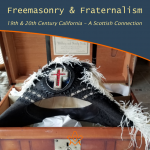 What is it that connects a very old, well-known Crieff family, with a former President of the United States of America? |
 The life of Bro. Cattanach, a theosophist occultist and Scottish Freemason |
 The Mysterious Walled Garden of Edzell Castle Explore the mysterious walled garden steeped in Freemasonry, Rosicrucianism, and Hermeticism. |
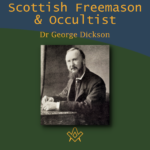 Dr. George Dickson: Scottish Freemason and Occultist Bro. Kenneth explores the life of Dr George Dickson a Scottish Freemason and Occultist |
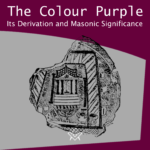 The Colour Purple - Its Derivation and Masonic Significance What is the colour purple with regards to Freemasonry? The colour is certainly significant within the Royal Arch series of degrees being emblematical of Union. |
 Bridging the Mainstream and the Fringe Edward MacBean bridging mainstream Freemasonry with the fringe esoteric branches of Freemasonry |
 Freemasonry in the Works of John Steinbeck We examine Freemasonry in the Works of John Steinbeck |
 Renegade Scottish Freemason - John Crombie Who was John Crombie and why was he a 'renegade'? |
 Scottish Witchcraft And The Third Degree How is Witchcraft connected to the Scottish Third Degree |
masonic knowledge
to be a better citizen of the world
share the square with two brothers

click image to open email app on mobile device


